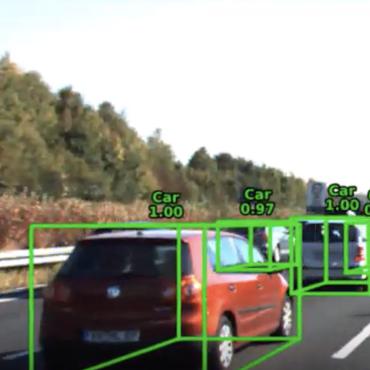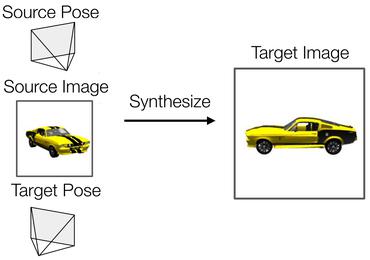Search Results for author: Chang Li
Found 40 papers, 8 papers with code
MEAN: Multi-head Entity Aware Attention Networkfor Political Perspective Detection in News Media
no code implementations • NAACL (NLP4IF) 2021 • Chang Li, Dan Goldwasser
The way information is generated and disseminated has changed dramatically over the last decade.
Quality-aware Masked Diffusion Transformer for Enhanced Music Generation
no code implementations • 24 May 2024 • Chang Li, Ruoyu Wang, Lijuan Liu, Jun Du, Yixuan Sun, Zilu Guo, Zhenrong Zhang, Yuan Jiang
To overcome these challenges, we introduce a novel quality-aware masked diffusion transformer (QA-MDT) approach that enables generative models to discern the quality of input music waveform during training.
 Ranked #1 on
Text-to-Music Generation
on MusicCaps
Ranked #1 on
Text-to-Music Generation
on MusicCaps
Dual-modal Prior Semantic Guided Infrared and Visible Image Fusion for Intelligent Transportation System
no code implementations • 24 Mar 2024 • Jing Li, Lu Bai, Bin Yang, Chang Li, Lingfei Ma, Lixin Cui, Edwin R. Hancock
Therefore, we propose a novel prior semantic guided image fusion method based on the dual-modality strategy, improving the performance of IVF in ITS.
FM-OV3D: Foundation Model-based Cross-modal Knowledge Blending for Open-Vocabulary 3D Detection
no code implementations • 22 Dec 2023 • Dongmei Zhang, Chang Li, Ray Zhang, Shenghao Xie, Wei Xue, Xiaodong Xie, Shanghang Zhang
In this work, we propose FM-OV3D, a method of Foundation Model-based Cross-modal Knowledge Blending for Open-Vocabulary 3D Detection, which improves the open-vocabulary localization and recognition abilities of 3D model by blending knowledge from multiple pre-trained foundation models, achieving true open-vocabulary without facing constraints from original 3D datasets.
Graph Representation Learning for Infrared and Visible Image Fusion
no code implementations • 1 Nov 2023 • Jing Li, Lu Bai, Bin Yang, Chang Li, Lingfei Ma, Edwin R. Hancock
Then, GCNs are performed on the concatenate intra-modal NLss features of infrared and visible images, which can explore the cross-domain NLss of inter-modal to reconstruct the fused image.
 Graph Representation Learning
Graph Representation Learning
 Infrared And Visible Image Fusion
Infrared And Visible Image Fusion
BRFL: A Blockchain-based Byzantine-Robust Federated Learning Model
no code implementations • 20 Oct 2023 • Yang Li, Chunhe Xia, Chang Li, Tianbo Wang
With the increasing importance of machine learning, the privacy and security of training data have become critical.
An Improved Artificial Fish Swarm Algorithm for Solving the Problem of Investigation Path Planning
no code implementations • 20 Oct 2023 • Qian Huang, Weiwen Qian, Chang Li, Xuan Ding
Our objective is to minimize costs, and to achieve this, we propose a chaotic artificial fish swarm algorithm based on multiple population differential evolution (DE-CAFSA).
DD-GCN: Directed Diffusion Graph Convolutional Network for Skeleton-based Human Action Recognition
1 code implementation • 24 Aug 2023 • Chang Li, Qian Huang, Yingchi Mao
Graph Convolutional Networks (GCNs) have been widely used in skeleton-based human action recognition.
An Intelligent Remote Sensing Image Quality Inspection System
1 code implementation • 22 Jul 2023 • Yijiong Yu, Tao Wang, Kang Ran, Chang Li, Hao Wu
Due to the inevitable presence of quality problems, quality inspection of remote sensing images is indeed an indispensable step between the acquisition and the application of them.
OmniForce: On Human-Centered, Large Model Empowered and Cloud-Edge Collaborative AutoML System
no code implementations • 1 Mar 2023 • Chao Xue, Wei Liu, Shuai Xie, Zhenfang Wang, Jiaxing Li, Xuyang Peng, Liang Ding, Shanshan Zhao, Qiong Cao, Yibo Yang, Fengxiang He, Bohua Cai, Rongcheng Bian, Yiyan Zhao, Heliang Zheng, Xiangyang Liu, Dongkai Liu, Daqing Liu, Li Shen, Chang Li, Shijin Zhang, Yukang Zhang, Guanpu Chen, Shixiang Chen, Yibing Zhan, Jing Zhang, Chaoyue Wang, DaCheng Tao
Automated machine learning (AutoML) seeks to build ML models with minimal human effort.
New $\sqrt{n}$-consistent, numerically stable higher-order influence function estimators
no code implementations • 16 Feb 2023 • Lin Liu, Chang Li
Higher-Order Influence Functions (HOIFs) provide a unified theory for constructing rate-optimal estimators for a large class of low-dimensional (smooth) statistical functionals/parameters (and sometimes even infinite-dimensional functions) that arise in substantive fields including epidemiology, economics, and the social sciences.
3DDesigner: Towards Photorealistic 3D Object Generation and Editing with Text-guided Diffusion Models
no code implementations • 25 Nov 2022 • Gang Li, Heliang Zheng, Chaoyue Wang, Chang Li, Changwen Zheng, DaCheng Tao
Text-guided diffusion models have shown superior performance in image/video generation and editing.
SOM-Net: Unrolling the Subspace-based Optimization for Solving Full-wave Inverse Scattering Problems
no code implementations • 8 Sep 2022 • Yu Liu, Hao Zhao, Rencheng Song, Xudong Chen, Chang Li, Xun Chen
The final output of the SOM-Net is the full predicted induced current, from which the scattered field and the permittivity image can also be deduced analytically.
EEG-based Emotion Recognition via Efficient Convolutional Neural Network and Contrastive Learning
no code implementations • IEEE Sensors Journal 2022 • Chang Li, Xuejuan Lin, Yu Liu, Rencheng Song, Juan Cheng, Xun Chen
To achieve a simple and effective model with supervised learning, we propose an efficient CNN and contrastive learning (ECNN-C) method for EEG-based emotion recognition.
Graph Pooling for Graph Neural Networks: Progress, Challenges, and Opportunities
1 code implementation • 15 Apr 2022 • Chuang Liu, Yibing Zhan, Jia Wu, Chang Li, Bo Du, Wenbin Hu, Tongliang Liu, DaCheng Tao
Graph neural networks have emerged as a leading architecture for many graph-level tasks, such as graph classification and graph generation.
Coverage Optimization of Camera Network for Continuous Deformable Object
no code implementations • 16 Mar 2022 • Chang Li, Xi Chen, Li Chai
To reduce the computational complexity, some feature points are carefully selected representing the continuous deformation process, and the visual coverage for the deformable object is transferred to cover the specific feature points.
Toward Open-World Electroencephalogram Decoding Via Deep Learning: A Comprehensive Survey
no code implementations • 8 Dec 2021 • Xun Chen, Chang Li, Aiping Liu, Martin J. McKeown, Ruobing Qian, Z. Jane Wang
Electroencephalogram (EEG) decoding aims to identify the perceptual, semantic, and cognitive content of neural processing based on non-invasively measured brain activity.
Optimizing Ranking Systems Online as Bandits
no code implementations • 12 Oct 2021 • Chang Li
Optimizing ranking systems online means that the deployed system can serve user requests, e. g., queries in the web search, and optimize the ranking policy by learning from user interactions, e. g., clicks.
Elastic Tactile Simulation Towards Tactile-Visual Perception
2 code implementations • 11 Aug 2021 • Yikai Wang, Wenbing Huang, Bin Fang, Fuchun Sun, Chang Li
By contrast, EIP models the tactile sensor as a group of coordinated particles, and the elastic property is applied to regulate the deformation of particles during contact.
Federated Unbiased Learning to Rank
no code implementations • 11 May 2021 • Chang Li, Hua Ouyang
Unbiased Learning to Rank (ULTR) studies the problem of learning a ranking function based on biased user interactions.
Experimental demonstration of memory-enhanced scaling for entanglement connection of quantum repeater segments
no code implementations • 21 Jan 2021 • Yunfei Pu, Sheng Zhang, Yukai Wu, Nan Jiang, Wei Chang, Chang Li, Luming Duan
The experimental realization of entanglement connection of two quantum repeater segments with an efficient memory-enhanced scaling demonstrates a key advantage of the quantum repeater protocol, which makes a cornerstone towards future large-scale quantum networks.
Quantum Physics
Human Action Recognition Based on Multi-scale Feature Maps from Depth Video Sequences
no code implementations • 19 Jan 2021 • Chang Li, Qian Huang, Xing Li, Qianhan Wu
We employ depth motion images (DMI) as the templates to generate the multi-scale static representation of actions.
The Skill-Action Architecture: Learning Abstract Action Embeddings for Reinforcement Learning
no code implementations • 1 Jan 2021 • Chang Li, Dongjin Song, DaCheng Tao
Derived from a novel discovery that the SMDP option framework has an MDP equivalence, SA hierarchically extracts skills (abstract actions) from primary actions and explicitly encodes these knowledge into skill context vectors (embedding vectors).
 Hierarchical Reinforcement Learning
Hierarchical Reinforcement Learning
 reinforcement-learning
+1
reinforcement-learning
+1
Intrinsic motivation in virtual assistant interaction for fostering spontaneous interactions
no code implementations • 13 Oct 2020 • Chang Li, Hideyoshi Yanagisawa
A novel motivation model is proposed, in which intrinsic motivation is affected by two factors that derive from user interactions with virtual assistants: expectation of capability and uncertainty.
Cascading Hybrid Bandits: Online Learning to Rank for Relevance and Diversity
no code implementations • 1 Dec 2019 • Chang Li, Haoyun Feng, Maarten de Rijke
Relevance ranking aims at building a ranked list sorted in decreasing order of item relevance, while result diversification focuses on generating a ranked list of items that covers a broad range of topics.
Quantum Communication between Multiplexed Atomic Quantum Memories
no code implementations • 5 Sep 2019 • Chang Li, Nan Jiang, Yukai Wu, Wei Chang, Yunfei Pu, Sheng Zhang, Lu-Ming Duan
The use of multiplexed atomic quantum memories (MAQM) can significantly enhance the efficiency to establish entanglement in a quantum network.
Quantum Physics
Encoding Social Information with Graph Convolutional Networks forPolitical Perspective Detection in News Media
no code implementations • ACL 2019 • Chang Li, Dan Goldwasser
Identifying the political perspective shaping the way news events are discussed in the media is an important and challenging task.
Cascading Non-Stationary Bandits: Online Learning to Rank in the Non-Stationary Cascade Model
no code implementations • 29 May 2019 • Chang Li, Maarten de Rijke
We consider the problem of identifying the K most attractive items and propose cascading non-stationary bandits, an online learning variant of the cascading model, where a user browses a ranked list from top to bottom and clicks on the first attractive item.
A Synaptic Neural Network and Synapse Learning
1 code implementation • ICLR 2019 • Chang Li
A Synaptic Neural Network (SynaNN) consists of synapses and neurons.
MergeDTS: A Method for Effective Large-Scale Online Ranker Evaluation
1 code implementation • 11 Dec 2018 • Chang Li, Ilya Markov, Maarten de Rijke, Masrour Zoghi
Our main finding is that for large-scale Condorcet ranker evaluation problems, MergeDTS outperforms the state-of-the-art dueling bandit algorithms.
Structured Representation Learning for Online Debate Stance Prediction
1 code implementation • COLING 2018 • Chang Li, Aldo Porco, Dan Goldwasser
Online debates can help provide valuable information about various perspectives on a wide range of issues.
Incremental Sparse Bayesian Ordinal Regression
1 code implementation • 18 Jun 2018 • Chang Li, Maarten de Rijke
Ordinal Regression (OR) aims to model the ordering information between different data categories, which is a crucial topic in multi-label learning.
BubbleRank: Safe Online Learning to Re-Rank via Implicit Click Feedback
no code implementations • 15 Jun 2018 • Chang Li, Branislav Kveton, Tor Lattimore, Ilya Markov, Maarten de Rijke, Csaba Szepesvari, Masrour Zoghi
In this paper, we study the problem of safe online learning to re-rank, where user feedback is used to improve the quality of displayed lists.
PurdueNLP at SemEval-2017 Task 1: Predicting Semantic Textual Similarity with Paraphrase and Event Embeddings
no code implementations • SEMEVAL 2017 • I-Ta Lee, Mahak Goindani, Chang Li, Di Jin, Kristen Marie Johnson, Xiao Zhang, Maria Leonor Pacheco, Dan Goldwasser
Our proposed system consists of two subsystems and one regression model for predicting STS scores.
Probabilistic Feature Selection and Classification Vector Machine
no code implementations • 18 Sep 2016 • Bingbing Jiang, Chang Li, Maarten de Rijke, Xin Yao, Huanhuan Chen
The proposed method, called probabilistic feature selection and classification vector machine (PFCVMLP ), is able to simultaneously select relevant features and samples for classification tasks.



















